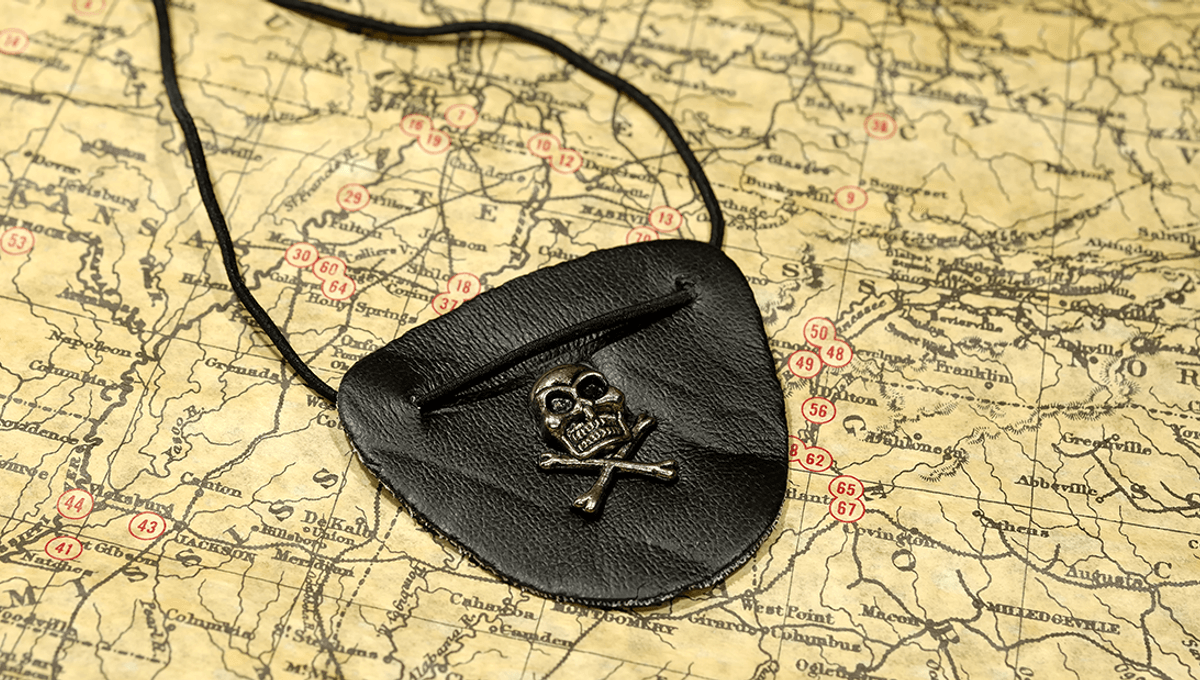
There are many baffling stereotypes about pirates, from how they buried their treasure for no fathomable reason, to how they all talked like English farmers.
One of the most firmly embedded in popular culture, along with hook hands and parrot companions, is that they wore eye patches in numbers not usually seen outside of eye injury units in major cities. So, why are they depicted like this? Was there a particularly high rate of eye injury among pirates? Did recruitment take place outside said eye injury units? Was this a particularly well-enforced fashion thing?
One theory, proposed without historical evidence, is that the patch wasn’t due to eye injuries at all, but to aid the pirates’ vision during battles. The idea goes that when boarding another ship and going below deck, your eyes will take some time to adjust to the lack of light. Wearing an eye patch meant pirates would have one eye adjusted to the sunlight above, while the other was used to darkness. Simply removing the patch as they went below decks meant that they would be able to see.
On the reverse, it could be that the pirates wore the eye patch below deck (say, at night) while up by candlelight, and the patch prepared their night vision if they had to go back up on deck again to fight or do other piratey activities.
Mythbusters looked at the idea in a 2007 pirate special. Kari was sent to an ophthalmologist, who tested the night vision in both her eyes, one of which had been exposed to a bright light and one which had been covered by a patch. As you’d expect, the eye that had been covered adapted quickly to the dark, and she was able to see much more quickly than in the eye exposed to the bright light.
The Mytbusters ruled the myth plausible, but does that mean it was actually done? Probably not.
“There is no evidence that pirates wore eyepatches,” pirate historian Dr Rebecca Simon told IFLScience. “There are no images, woodcuts, or any mentions of them in any primary sources from the 17th and 18th centuries.”
The more likely explanation is that the eye patch, like the accents, are the result of popular fiction, rather than historical fact.
“These myths largely came from the novel, Treasure Island, by Robert Louis Stevenson. His antagonist, Long John Silver, has served as the model for many other pop culture pirates, such as Jack Sparrow,” Simon explained.
These fictional depictions were shaped by real-life pirates, but not your typical run-of-the-mill sea-farers.
“The pirate Edward Teach (otherwise known as Blackbeard) is a real-life pirate who has served as an inspiration to writers such as Stevenson because of how outrageous his looks were at the time (long hair and beard with firecrackers smoking in it during attacks) and his practically theatrical attacks (although he never killed anyone until his final battle),” Simon continued.
Popular depictions of flamboyantly-dressed pirates today have their roots in these early descriptions, but the reality was much more drab.
“In general, pirates dressed like any other sailor of the time but their clothes might be in better condition because of stolen clothes from other ships,” Simon explained. “Pirate captains and those higher ups often dressed in fancy clothes to show off their success in battles.”
Source Link: You Probably Believe The Myth About Why Pirates Wore Eye Patches